Several years ago, back before he started writing the last three Wheel of Time books, Brandon Sanderson was kind enough to take a half hour out of his time at Book Expo America to talk to me about writing. I was just starting my writing journey, and he was well on his way. I don’t know if he’ll remember the conversation, but I will never forget it. Apart from learning about his experiences, apart from having a real author talk to a nobody like me, and apart from the words of wisdom he passed along, what still stands out is the part of the conversation where we talked about the books we’ll always cherish.
I told him I wasn’t much of a reader until I picked up The Hobbit and that, in all honesty, combined with The Lord of the Rings was what sealed the deal. He nodded sagely and said (paraphrasing—it WAS a long time ago) that that’s how it always works. A reader usually finds what he called a “gateway book” to make him/her a reader. For me, The Hobbit and The Lord of the Rings were absolutely my gateway books.
Flashback to my younger self. Seventh grade. Middle school. Back then you couldn’t get me to read a book, not even when my grades depended on it. As is always the case, as is still the case when looking for something, a friend not only recommended The Hobbit as a good place to start, he actually handed me a copy. From there on: bam, hooked. I finished The Hobbit in a week or so—again, not a reader—and not long after closing the cover I was off to grab a copy of The Fellowship of the Ring. Fellowship was longer than anything my non-reader self had ever picked up. I opened the book skeptically and turned to the first page. There I saw the words:
“Three rings for the Elven-kings under the sky,
Seven for the Dwarf-lords in their halls of stone,
Nine for the Mortal Men doomed to die,
One for the Dark Lord on this dark throne
In the Land of Mordor where the Shadows lie.”
I don’t remember where I was at the time, whether I sat in a comfortable chair or on a couch or even on the school bus. I just remember how those lines burned into my head. I remember how the world stopped when I read. I rushed through book one and then two and then the final one. Tolkien transported me to a place I’d never seen, a place my friend said he wished he could live. I wasn’t so sure about THAT (no TV in Middle-Earth, after all), but I’d never come across anything this breathtakingly beautiful. The epic storytelling, the scenery, the backstory; it all blew me away. This was my gateway book/story. This is what made me a reader. I devoured The Lord of the Rings. I devoured The Silmarillion. And when I was done, I went back to the start and read them again. And again. And again.
Here are five more of my gateway books that opened the door to specific genres:
Gateway to Middle-grade: Harry Potter and the Sorcerer’s Stone by J.K. Rowling
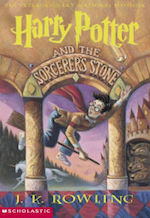 Harry Potter may well be the greatest gateway book of our time. J.K. Rowling’s immensely successful series drew more kids into bookstores and libraries than I’ve ever seen (not to mention movie theaters). Harry Potter was also my first foray into middle-grade novels. I had to see what all the fuss was about, and as soon as I started reading, I was hooked. As were millions, possibly billions, of people worldwide. I saw nieces and nephews who didn’t like to read transformed. My own kids greedily devoured these books and are still avid readers today. Harry Potter and the Cursed Child is my can’t miss book of the summer, and it doesn’t matter a whit to me that it’s a script and not a complete book.
Harry Potter may well be the greatest gateway book of our time. J.K. Rowling’s immensely successful series drew more kids into bookstores and libraries than I’ve ever seen (not to mention movie theaters). Harry Potter was also my first foray into middle-grade novels. I had to see what all the fuss was about, and as soon as I started reading, I was hooked. As were millions, possibly billions, of people worldwide. I saw nieces and nephews who didn’t like to read transformed. My own kids greedily devoured these books and are still avid readers today. Harry Potter and the Cursed Child is my can’t miss book of the summer, and it doesn’t matter a whit to me that it’s a script and not a complete book.
Gateway to Young Adult: The Hunger Games by Suzanne Collins
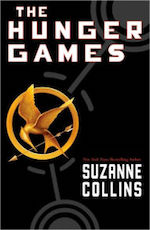 I never considered young adult a genre for me. But, like Harry Potter, so many people whose opinions I trust said I just had to read The Hunger Games. Eventually, I gave in and wow, was I glad I did. The Hunger Games destroyed all my misconceptions about YA. Suzanne Collins’ stories are complex and emotionally charged. I never imagined the genre could be so raw. A 16-year-old with PTSD? Unbelievable. Torture, the brutality too. I couldn’t believe it. Sure, it’s not as overt as in A Game of Thrones, but the violence every bit as twisted. Needless to say, I’m now a YA reader. Some of my new favorites include: Libba Bray’s The Diviners and Brandon Sanderson’s The Reckoners. Check them out if you haven’t already done so.
I never considered young adult a genre for me. But, like Harry Potter, so many people whose opinions I trust said I just had to read The Hunger Games. Eventually, I gave in and wow, was I glad I did. The Hunger Games destroyed all my misconceptions about YA. Suzanne Collins’ stories are complex and emotionally charged. I never imagined the genre could be so raw. A 16-year-old with PTSD? Unbelievable. Torture, the brutality too. I couldn’t believe it. Sure, it’s not as overt as in A Game of Thrones, but the violence every bit as twisted. Needless to say, I’m now a YA reader. Some of my new favorites include: Libba Bray’s The Diviners and Brandon Sanderson’s The Reckoners. Check them out if you haven’t already done so.
Gateway to Post-apocalyptic: The Girl with All the Gifts by M.R. Carey
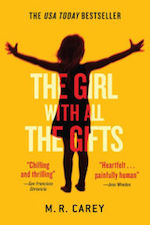 I know The Hunger Games could fit nicely in the post-apocalyptic sub-genre, but that series started me reading YA, so I needed something else. The title that hit the spot for me here was M.R. Carey’s grim The Girl with All the Gifts. This book is horrific and exhilarating, and for some unknown reason, reminds me of Ridley Scott’s Alien. Maybe because it’s elegant, or maybe it’s because Carey took a tried-and-true formula—zombies, end of the world, survival, etc.—and turned the whole clichéd premise on its head and made it something completely new. I blew through this book in a day or two because I was riveted. The Girl with All the Gifts isn’t as well known as the others on this list, but it should be.
I know The Hunger Games could fit nicely in the post-apocalyptic sub-genre, but that series started me reading YA, so I needed something else. The title that hit the spot for me here was M.R. Carey’s grim The Girl with All the Gifts. This book is horrific and exhilarating, and for some unknown reason, reminds me of Ridley Scott’s Alien. Maybe because it’s elegant, or maybe it’s because Carey took a tried-and-true formula—zombies, end of the world, survival, etc.—and turned the whole clichéd premise on its head and made it something completely new. I blew through this book in a day or two because I was riveted. The Girl with All the Gifts isn’t as well known as the others on this list, but it should be.
Gateway to Mystery/Thrillers: Pendergast Series by Douglas Preston and Lincoln Child
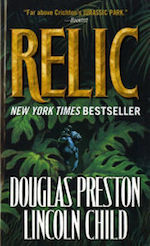 Who doesn’t love a good monster story? When I discovered Preston and Child’s Relic, I knew I was onto something special. This was the first book in what would go on to become a continuing series that had everything I love about both science fiction and thrillers. The story opens in some remote jungle location before moving to the incredibly spooky New York Museum of Natural History. A monster is roaming around the halls—huge, murderous, and unstoppable. Part haunted mansion, part Frankenstein, Relic contains all the hallmarks of a taught and scary book. Preston and Child go on to write several other stories that blend horror, science, and monsters in ways that are believable and fantastic. Though set in the present, they might as well be from the Victorian age. I love these books and keep coming back for more.
Who doesn’t love a good monster story? When I discovered Preston and Child’s Relic, I knew I was onto something special. This was the first book in what would go on to become a continuing series that had everything I love about both science fiction and thrillers. The story opens in some remote jungle location before moving to the incredibly spooky New York Museum of Natural History. A monster is roaming around the halls—huge, murderous, and unstoppable. Part haunted mansion, part Frankenstein, Relic contains all the hallmarks of a taught and scary book. Preston and Child go on to write several other stories that blend horror, science, and monsters in ways that are believable and fantastic. Though set in the present, they might as well be from the Victorian age. I love these books and keep coming back for more.
Gateway to Dino-science Fiction: Jurassic Park by Michael Crichton
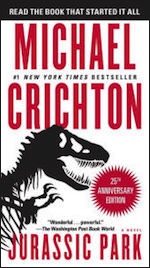 Michael Crichton’s best-selling book is everything I want my science fiction to be: believable, filled with science and experiments gone wrong, heart-stopping, and truly scary. The dinosaurs don’t hurt either. I remember coming across this book in the store, and I was sold the minute I saw the cover. Even today I think it’s one of the best pieces of cover art I’ve ever seen. Of course that means nothing if the book itself isn’t as great as it is. I grew up loving dinosaurs, and as I said when talking about Relic, having a great monster seals the deal for me. Jurassic Park has both. When you add in superb writing and the truly thrilling story, you get one of my favorite books of all time. Sure, the sequel was a bit of a letdown, but I keep going back to re-read the original, something I will do for a long time to come.
Michael Crichton’s best-selling book is everything I want my science fiction to be: believable, filled with science and experiments gone wrong, heart-stopping, and truly scary. The dinosaurs don’t hurt either. I remember coming across this book in the store, and I was sold the minute I saw the cover. Even today I think it’s one of the best pieces of cover art I’ve ever seen. Of course that means nothing if the book itself isn’t as great as it is. I grew up loving dinosaurs, and as I said when talking about Relic, having a great monster seals the deal for me. Jurassic Park has both. When you add in superb writing and the truly thrilling story, you get one of my favorite books of all time. Sure, the sequel was a bit of a letdown, but I keep going back to re-read the original, something I will do for a long time to come.
Well, there you have it. Those are the books that most influenced my intro to reading and specific genres. I’m sure for some of you it’s the same, for others much different. I’d love to keep this conversation going and hear what your gateway books were. Maybe one day, it’ll be mine, too!
Top image: The Fellowship of the Ring (2001)
 Keith Yatsuhashi is the author of Kojiki, out this summer from Angry Robot. You can find him on Twitter @keithyatsuhashi.
Keith Yatsuhashi is the author of Kojiki, out this summer from Angry Robot. You can find him on Twitter @keithyatsuhashi.









